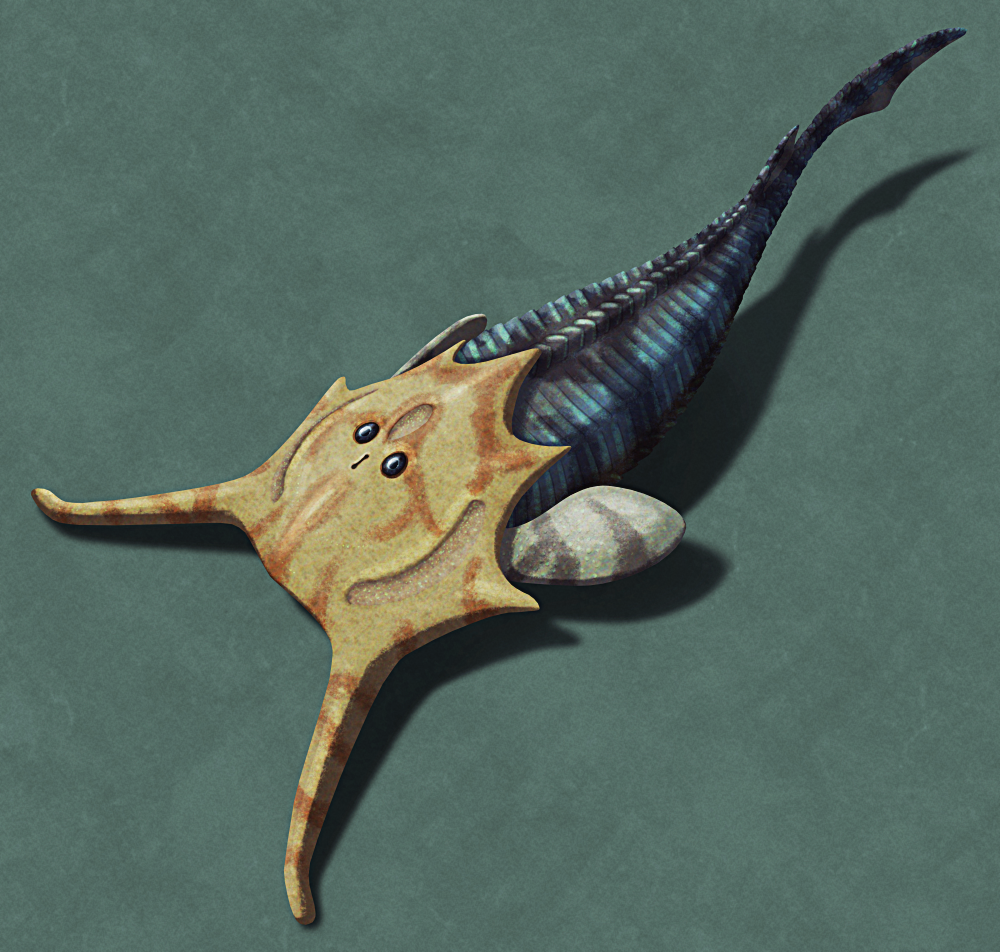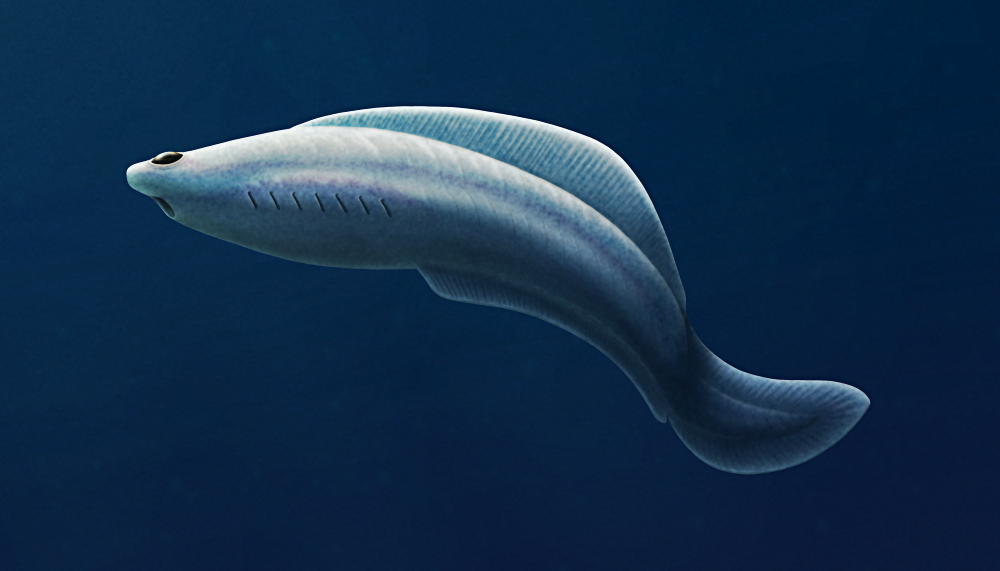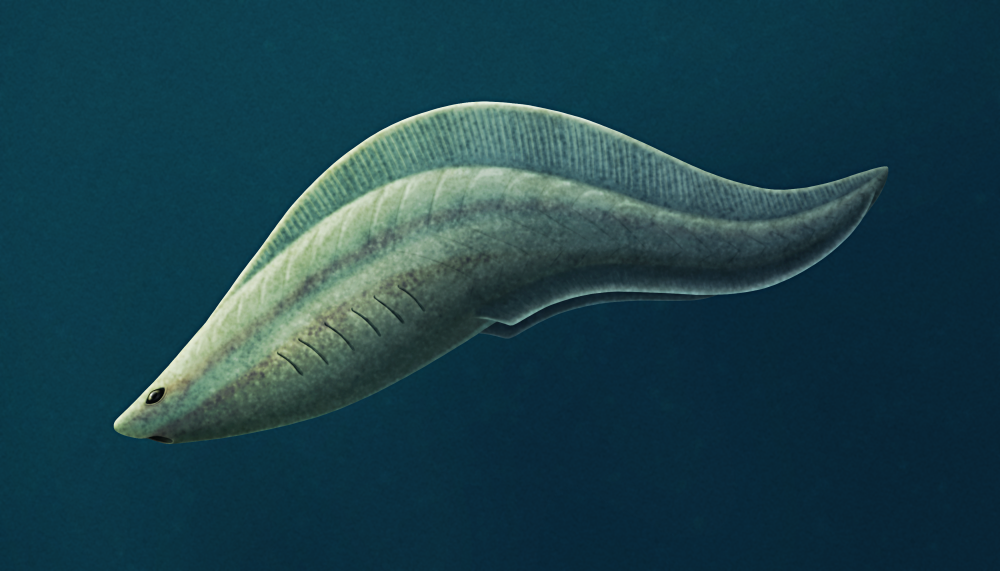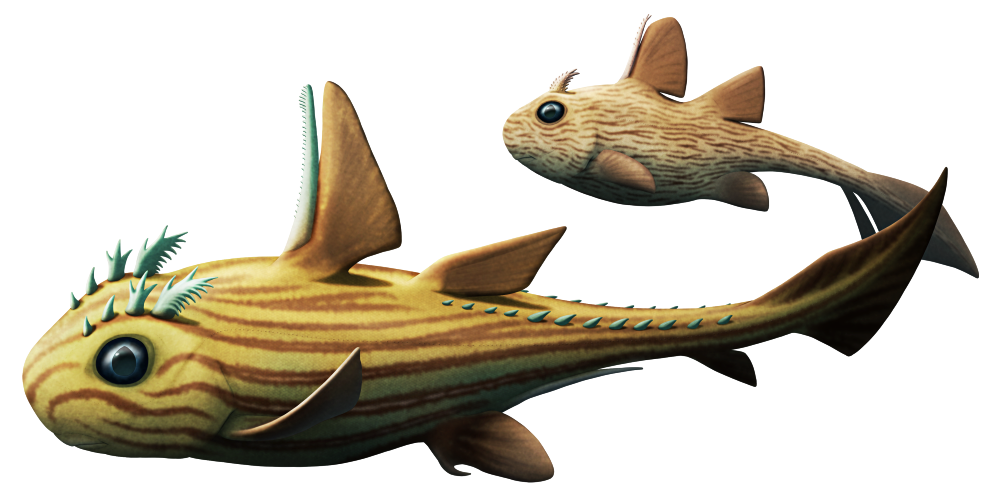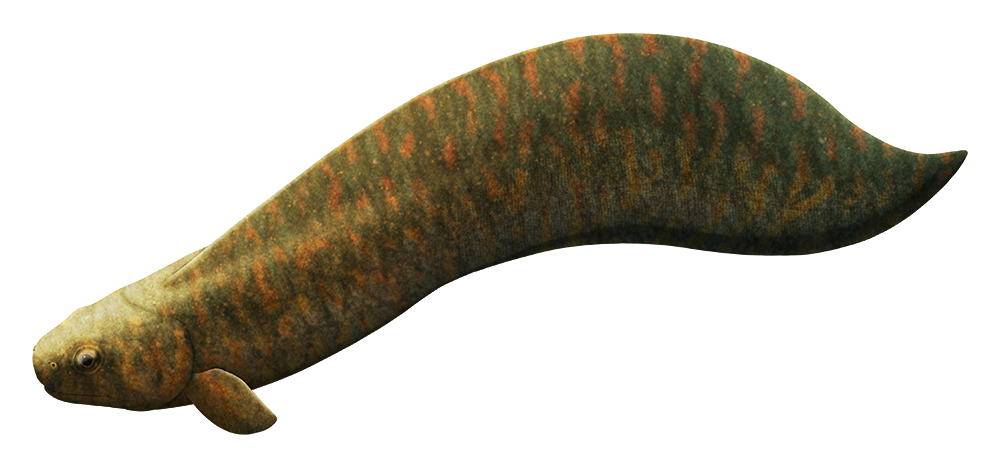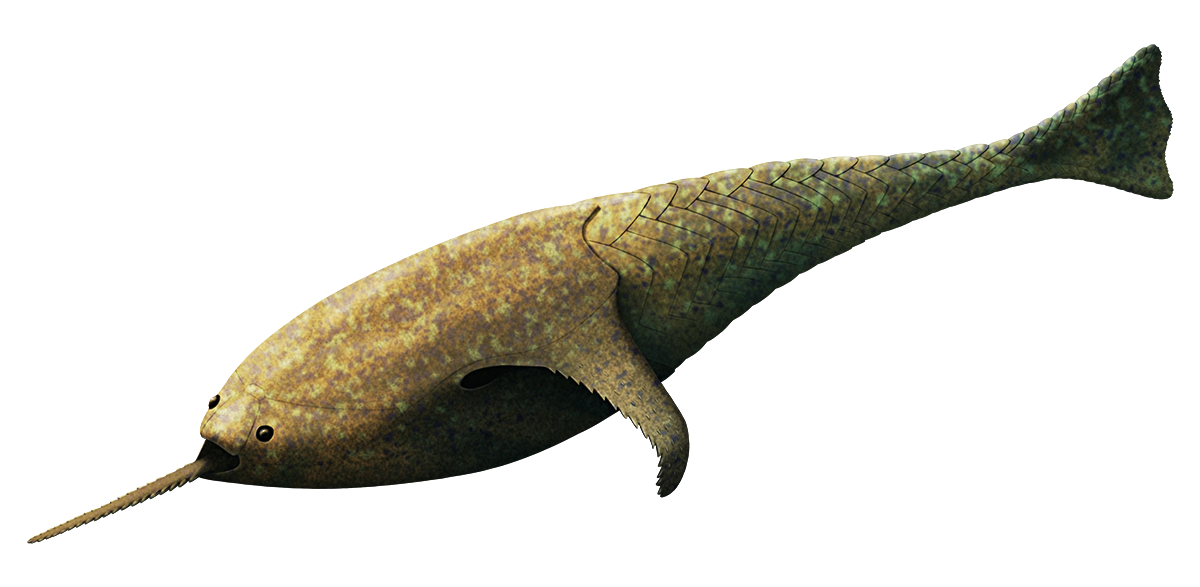Osteostracans were an ancient group of jawless fish, closely related to early jawed vertebrates, whose fossils are known from the mid-Silurian to the late Devonian of what is now North America, Europe, and Asia.
They were heavily armored, with bony head shields and rows of large scales covering their bodies. While their flattened shapes and upward-facing eyes have resulted in them traditionally being interpreted as mud-grubbing bottom-dwellers, their paddle-shaped pectoral fins, dorsal fins, and strong tails indicate they were also quite good swimmers – and their diverse hydrodynamic head shield shapes suggest they probably had a much wider range of ecologies than previously thought.
Although many osteostracans had large flaring spines on the sides of their heads, or long snout-like spikes at the front, Tauraspis rara here was unique in having two long front-facing horn-like projections.
Around 7.5cm long (~3″), it lived in brackish and freshwater environments in what is now northern Siberia during the early Devonian, about 410-407 million years ago. Like other osteostracans it had a small keyhole-shaped “nostril” opening, and large patches of sensory organs known as “cephalic fields” on the sides and top of its head shield.
The fields were covered with a mosaic of small bony plates, and their exact function is still a mystery – but they may have been involved in sensing vibrations in the water, or possibly even been electric organs.
Similarly, what Tauraspis used its unusual pair of “horns” for is also unknown.
Continue reading “Tauraspis”
